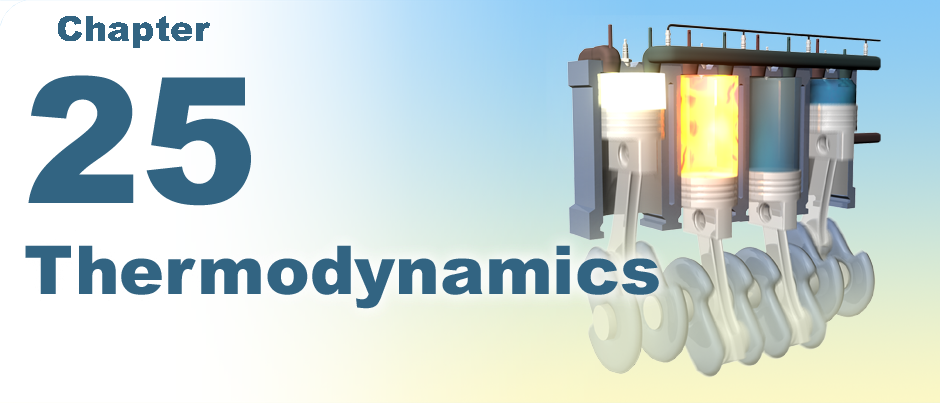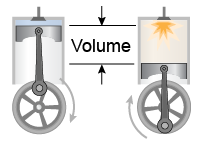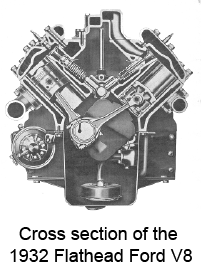 |
Both Leonardo da Vinci and Isaac Newton drew up designs for self-propelled vehicles, but neither actually built one. The first self-propelled “car” was built in 1769 by a French engineer and mechanic, Nicolas Joseph Cugnot. Really a three-wheeled tractor, Cugnot’s invention used a steam engine for power and barely managed a speed of 2½ miles per hour. 
|
A practical car requires a compact, lightweight, and reliable engine that can produce the equivalent power of a team of horses. This crucial technology came in 1876 when German engineer Nikolaus Otto invented the first practical internal combustion engine. True four-wheel automobiles arrived 10 years later when, in 1886, Gottlieb Daimler and Karl Benz independently created improved engines, cars, and companies to build them. The two inventor’s companies merged in 1924 to create Daimler-Benz AG, the forerunner of today’s Mercedes-Benz. 
|
 An internal combustion engine operates on a volume of gas/air mixture not much larger than a one liter soda bottle. The exploding mixture forces a piston down, turning the crank and spinning the engine. The larger the volume displaced by the piston as it moves, the more air and fuel can be burned per cycle, raising the engine’s power output. Otto’s first engine displaced 6 L but produced only 4 hp.
An internal combustion engine operates on a volume of gas/air mixture not much larger than a one liter soda bottle. The exploding mixture forces a piston down, turning the crank and spinning the engine. The larger the volume displaced by the piston as it moves, the more air and fuel can be burned per cycle, raising the engine’s power output. Otto’s first engine displaced 6 L but produced only 4 hp. 
|
 The first high-performance V8 car engine was created by the Ford Motor Company in 1932. Called the flathead for its odd-shaped valve covers, Ford’s 1932 engine displaced 3.6 L and initially produced 65 hp. The engine was so successful that its variations appeared in Ford cars and trucks for the next 21 years. Flathead Ford engines are still highly sought-after by hot-rod enthusiasts today. Of course, the essence of all good technology is continuing innovation, and the internal combustion engine is no exception. The gasoline engine in the Ford Fusion hybrid generates 165 hp from only 2.5 L of displacement, making it 350% more efficient and able to drive 47 miles on one gallon of gas. The modern supercharged 5.8 L performance engine generates 650 hp, or 112 hp/L, a whopping 625% higher efficiency than was achieved in the 1932 Flathead.
The first high-performance V8 car engine was created by the Ford Motor Company in 1932. Called the flathead for its odd-shaped valve covers, Ford’s 1932 engine displaced 3.6 L and initially produced 65 hp. The engine was so successful that its variations appeared in Ford cars and trucks for the next 21 years. Flathead Ford engines are still highly sought-after by hot-rod enthusiasts today. Of course, the essence of all good technology is continuing innovation, and the internal combustion engine is no exception. The gasoline engine in the Ford Fusion hybrid generates 165 hp from only 2.5 L of displacement, making it 350% more efficient and able to drive 47 miles on one gallon of gas. The modern supercharged 5.8 L performance engine generates 650 hp, or 112 hp/L, a whopping 625% higher efficiency than was achieved in the 1932 Flathead. 
|
| |
|

